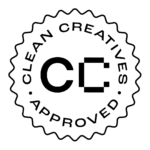Content marketing for professional service firms should be a no brainer. However, reports indicate that only 63% of professional service firms (PSF) have a company blog and only 65% produce a company newsletter. That surprised me. Professional Service Firms are trusted to deliver services and advice to clients and the best way to demonstrate that expertise is through content, of some form. From the same report, I then noticed that 80% of PSF use social media. Now that’s really worrying. If there is a lack of quality content being produced in PSF, then what are they sharing? Social media simply doesn’t work without quality, engaging and shareable content.
For PSF demonstrating knowledge and expertise is vital. There is no better way to do this than with content marketing. Content marketing doesn’t just mean you write a blog every week. It’s in anything you do that’s of value to your audience. This includes events, presentations, newsletters, website content, articles, guides, blogs, newsletters, sales collateral, the list goes on and on.
In this short guide, you will find out more about why content marketing is important for PSF and how you can start building a result driven content strategy for your firm.
The importance of content marketing for Professional Service Firms
Content has been used for centuries to attract and engage audiences. Media companies have made billions, creating quality content that they can either sell or use to attract advertising revenue. Content for non-media companies, on the other hand, is just as valuable. It is a tool that, put simply, helps them attract and retain customers. Content helps you to:
- Position your firm’s services and differentiate against your competitors.
- Demonstrate your knowledge and expertise.
- Create authority and show yourself as a thought leader in your industry or sector.
- Build trust and reassurance.
- Generate valuable website traffic from people you want to do business with.
- Generate social engagement from clients and prospects.
- Support the sales process with valuable materials.
Barriers to creating content
Most Professional Service Firms know that they should be producing content. But producing any old content, without a targeted strategy, simply won’t do and could have the opposite effect to what you are looking to achieve. You need amazing content, that’s better than anything else in your industry if you want to attract and retain customers. Let alone be shared or talked about online. This content needs to be targeted to what your clients and prospects are looking for or challenges they are facing, and then distributed effectively. This all takes valuable time and energy. 41% of firms say producing content is their biggest challenge. Here’re a few of the reasons (and my counter arguments):
- Time spent on content production is time spent away from fee earning. But it’s worth it, for the reasons outlined above.
- It’s often difficult to get ‘buy in’ from senior decisions makers. Yes, but the only way to change this mindset is by using accurate reporting and ROI measurement.
- There is no budget. There’s always budget for things that can be proven to work. Start small with your strategy and demonstrate results, then watch budget flood to content.
- Firms don’t want to give away their secrets for free. You want the clients who recognise the value in the expertise you demonstrate and are willing to hire you. Prospects who want something for free, are not the firm’s you want to do business with anyway. They may, however, share content with associates and talk about your work. That’s no bad thing!
Developing your content strategy
Just churning out content without thought is a sure-fire way to wasted time and money. Many PSF fill their blogs with dull content such as partner hires, company updates or office moves. While there is a place for updates like this, do you think your audience is going to be excited about them, let alone share them or talk about them? Your content strategy needs to be less self-indulgent, less focussed on YOU and more focussed on YOUR AUDIENCE. Here’re a few things to think about:
- Know your niche. Focus on topics you are experts in or work you do exceptionally well, don’t try and cover all bases. There will undoubtedly be bigger firms with more resource that can get away with an expansive content program. For most firms, there will be a handful of areas where they can genuinely position themselves as experts. Use this to your advantage.
- Start small and grow. Pick the content areas you feel you can excel in, distribute the content effectively and measure the results. Then use this reporting information to optimise your strategy and grow your content plan.
- Think beyond the blog. A blog is a great place to start, but think outside the box with your content creation, there are some ideas to get you started below.
- Aim high. A great way to scale your content strategy is to start off with one big piece such as a white paper or detailed guide, (this is often called long form content). This content can then be repurposed into an array of other smaller content pieces such as blogs, social posts, newsletters, and much more. This is a great way of getting more value out of your content marketing buck.
- Know your audience. Who are they? What do they do? Where do they hangout? What are their challenges? Creating a customer avatar is so valuable when developing your content strategy to ensure everything you produce is on point.
- Have goals and set KPIs. Do you want to generate social shares? Do you want more leads? Do you want more website visitors? By understanding what you want to achieve, and how you are going to measure success, you can ensure your content strategy is focussed and aligned with business objectives.
- Be topical. Even if you have the most detailed content plan, there will always be curveballs such as legislative updates or newsworthy stories. It’s important to make sure you stay relevant and show that your firm is on top of the latest changes in your industry.
What content should you produce?
Be creative with your content strategy. Think about what you want to achieve and the best way to go about meeting these objectives. Case studies and employee profile pages are a great way to build trust, whereas blog posts, event presentations or white papers are excellent for demonstrating your knowledge and expertise. There are so many content forms you could use, here’re a few to get you started:
- Expert interviews
- Client case studies
- Opinion pieces
- Downloadable how to guides
- White papers
- Blog posts
- Email newsletters
- Printed newsletters
- Infographics
- Slide shares
- Social posts
- Speaker events
- Videos
- Podcasts
Repurpose, Repurpose, Repurpose
I’ve mentioned it once, but it deserves mentioning again (or even three more times). If you’ve spent time and effort creating an amazing piece of content, repurpose it into as many other pieces as you can to get the most out of every hour you spend creating! You’ll end up with a wealth of material you can use for your social media channels, website, and company newsletter.
How to get your content in front of your clients and prospects
Once you’ve created your awesome content, it’s all about distribution. Here’re a few things to think about:
- Social media. Posts, paid ads, reposts.
- Your website. Don’t hide content away, link to it from your home page and other relevant pages. Consider your main website, mobile site and blog site.
- SEO your content to generate more website visits and leads.
- PPC (Pay Per Click). Allocate some PPC budget to your content to generate more website traffic and leads. Think about text ads, display ads and remarketing.
- Email marketing to clients and prospects.
- Print: It’s old school I know, but print is a great medium. Your content is likely to be shared among colleagues or associates and stored for future use.
- Events: Host or attend events to deliver your content face to face.
- PR: Approach relevant industry publications to see if you can get your content published on their website or in their magazines.
- Sponsor it: Target your content at specific users or demographics by sponsoring it on social networks such as LinkedIn and X.
- Influencers: Are there experts in your industry with big communities? Can they be approached to share your content?
Measuring the impact of your content strategy
There are so many metrics you can use to measure the impact of your content marketing but first, you need to know what is valuable to you and how you will quantify success. What are decision makers in your organisation looking for? Don’t bore them with statistics. If your firm wants leads, then that’s what your content strategy needs to be focussed on and that’s what you need to report on. There are so many metrics you can use to measure response, from page views and time on page to social shares or goal conversion, email CTR or lead quality, and so much more in between! I’ve previously written a piece dedicated to measuring content marketing ROI.
Some inspiration to get you started
Here are some great content marketing examples from Professional Service Firms to give you some inspiration for your content strategy.
My Accountancy Place is a Manchester based accountancy practice that really knows how to make the most of client case studies.
DWF absolutely nail product pages. Service descriptions are supported by bespoke microsites, recent blog updates, guides, in-depth expert profiles and training courses.
Peninsula is an HR and Health and Safety Consultancy. Their knowledge center is a one stop shop for guides, blogs, FAQs, downloadable guides and much more. They are a great example of a business repurposing content and addressing client challenges through a carefully considered content strategy.
Conclusion
Content marketing is incredibly valuable to any firm, especially professional service firms. In fact, you could argue there is very little point investing in other forms of marketing if you don’t have quality content. For example, what’s the point in spending thousands on a PPC campaign if the landing page you are sending traffic to is poor? Quality content should be at the very centre of your entire marketing strategy. Get this right and watch the success of your other marketing channels go through the roof.


